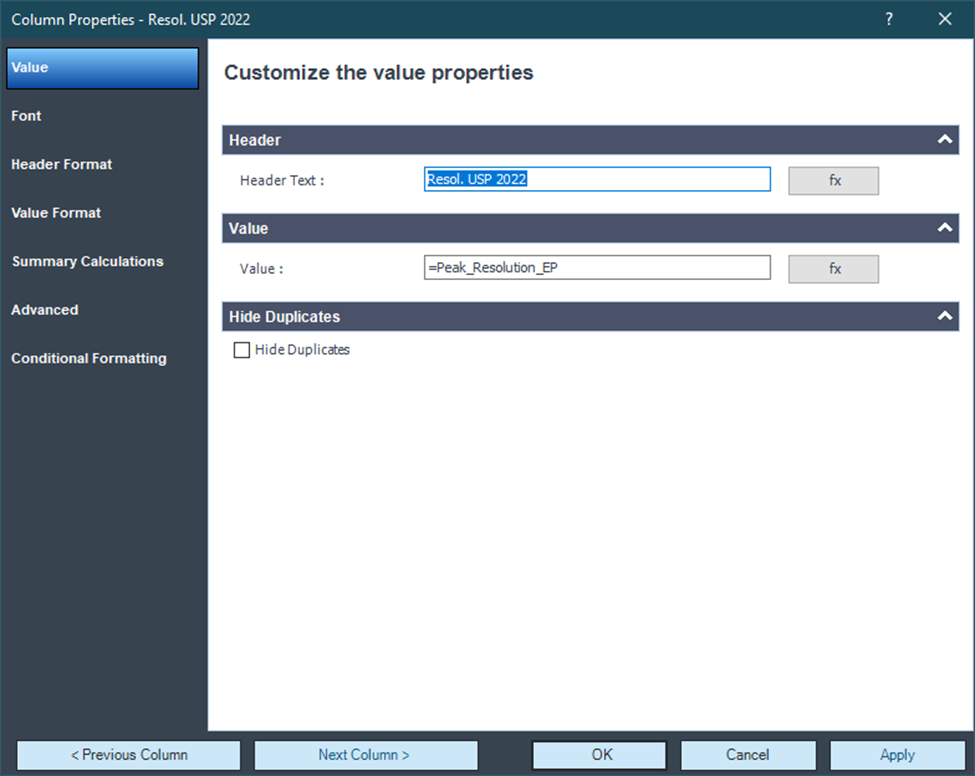Implementing USP 2022 Updated Formulas in OpenLab CDS
USP chapter 621 updates that are effective December 1, 2022
and amended further effective April 1, 2023
Introduction
The United States Pharmacopeia (USP), chapter 621 for Chromatography has been updated with changes that are effective December 1, 2022 (and further amended April 1, 2023). Relevant to chromatography data systems are the following changes:
- Resolution is based now on the peak width at half of the peak height.
- Plate number is based now on the peak width at half of the height.
- Signal-to-noise is now calculated using a range of noise at least 5 times the width at half-height of the peak.
Users of OpenLab CDS can adopt the new formulas as described in this article.
Calculating the New Formulas in OpenLab CDS
Resolution (Rs)
The new formula is the same as EP or JP so users of earlier versions can simply choose EP or JP Resolution.
Then, in the Report Template Editor, rename the column to Resol. USP 2022:

Plate Number (N)
The new formula is the same as ASTM, EP, and JP so users of earlier versions can simply choose one of these. Again, the parameter can be renamed in the reports.
Signal-to-Noise Ratio (S/N)
The new USP method measures noise across at least 5 times the peak width at half height where the previous method used only 5 times the peak width. In OpenLab CDS, the Noise range setting of Automatic uses a range of 20x the peak width at half height. For a narrower range, you can enter a time range manually.
Scope
This article applies to versions 2.2 through 2.7 of OpenLab CDS.
References
The calculation formulas used by OpenLab CDS can be found in the OpenLab Help & Learning online at System Suitability Calculations
Notice of Adoption of Harmonized Standard (usp.org)
Change Log
29Sep 2022: Initial version
19Apr 2023: Updated with amended signal to noise effective April 1, 2023
